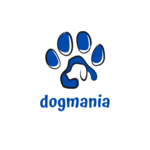Benefits of Switching to Grain-Free Dog Food
In recent years, grain-free dog food has surged in popularity among pet owners. This dietary shift is driven by a growing awareness of the potential benefits it offers for dogs, from improved digestion to enhanced skin and coat health. If you're considering making the switch for your furry friend, this comprehensive guide will help you understand the benefits and how to make the transition smoothly.
Understanding Grain-Free Dog Food
Grain-free dog food is formulated without grains such as wheat, corn, rice, and barley. Instead, these diets often include alternative carbohydrate sources like sweet potatoes, peas, and lentils. The goal is to provide a diet that is more closely aligned with a dog's natural eating habits, which historically did not include grains.
Common Ingredients in Grain-Free Dog Food
1. Meat Proteins: Chicken, beef, lamb, fish, and more.
2. Vegetables: Sweet potatoes, peas, lentils, and carrots.
3. Fruits: Apples, blueberries, and cranberries.
4. Legumes: Chickpeas and beans.
Health Benefits of Grain-Free Dog Food
Improved Digestion
Many dogs struggle to digest grains properly, leading to issues like bloating, gas, and diarrhea. Grain-free diets can be easier on the digestive system, as they often contain higher-quality, easily digestible proteins and fibers.
Allergy Reduction
Grain allergies are not uncommon in dogs, with symptoms ranging from skin irritations to gastrointestinal distress. Switching to a grain-free diet can alleviate these symptoms, as it eliminates common allergens from the diet.
Enhanced Skin and Coat Health
A diet rich in proteins, healthy fats, and essential fatty acids can improve the condition of your dog’s skin and coat. Many pet owners report shinier, softer fur and reduced itching and scratching after transitioning to grain-free food.
Increased Energy Levels
Grain-free diets often contain higher protein and fat content, which can provide a more consistent energy source. This can be particularly beneficial for active dogs, enhancing their stamina and overall vitality.
Weight Management
For dogs that struggle with weight issues, grain-free food can be a helpful option. These diets typically have a higher protein-to-carbohydrate ratio, which can aid in maintaining a healthy weight by promoting lean muscle mass and reducing fat storage.
Potential Concerns and Considerations
Nutritional Balance
It’s essential to ensure that any grain-free food you choose is nutritionally balanced. Look for high-quality brands that meet the Association of American Feed Control Officials (AAFCO) standards. Consult your veterinarian to ensure your dog's specific nutritional needs are met.
Cost
Grain-free dog food can be more expensive than traditional dog food. However, the potential health benefits and reduced vet bills might offset the higher cost. Buying in bulk or subscribing to a delivery service can also help manage expenses.
Controversies and Research
There has been some controversy regarding the long-term effects of grain-free diets, particularly concerning a potential link to canine dilated cardiomyopathy (DCM). While research is ongoing, it’s crucial to stay informed and consult with your vet if you have concerns.
How to Transition to Grain-Free Dog Food
Gradual Introduction
Switching your dog's diet abruptly can cause digestive upset. Start by mixing a small amount of grain-free food with their current food. Gradually increase the proportion of grain-free food over 7-10 days until you’ve completely switched over.
Monitor Your Dog’s Health
Pay close attention to your dog’s reaction to the new diet. Look for positive changes like increased energy, better digestion, and an improved coat. However, also be on the lookout for any signs of allergies or digestive issues.
Regular Vet Check-Ups
Schedule regular check-ups with your veterinarian to monitor your dog’s health and adjust the diet as needed. Blood tests can help ensure that your dog is receiving all the necessary nutrients.
Choosing the Right Grain-Free Dog Food
Read Labels Carefully
Not all grain-free dog foods are created equal. Read labels to ensure that the food contains high-quality protein sources as the first ingredient. Avoid foods with excessive fillers, artificial additives, and low-quality ingredients.
Consider Your Dog’s Specific Needs
Every dog is unique. Consider factors such as age, breed, size, and activity level when choosing a grain-free dog food. Puppies, adult dogs, and senior dogs all have different nutritional requirements.
High-Quality Brands
Opt for reputable brands known for their quality and transparency. Brands that use human-grade ingredients and have rigorous quality control measures in place are preferable.
Conclusion
Switching to grain-free dog food can offer a range of benefits for your canine companion, from improved digestion and allergy relief to enhanced skin and coat health. While it may come with higher costs and some potential concerns, the overall health and well-being of your dog can be significantly enhanced with the right grain-free diet.
Before making any dietary changes, always consult with your veterinarian to ensure it’s the best choice for your dog’s specific needs. With careful planning and monitoring, transitioning to grain-free dog food can be a positive and rewarding step towards a healthier, happier life for your furry friend.



leave me your thoughts here